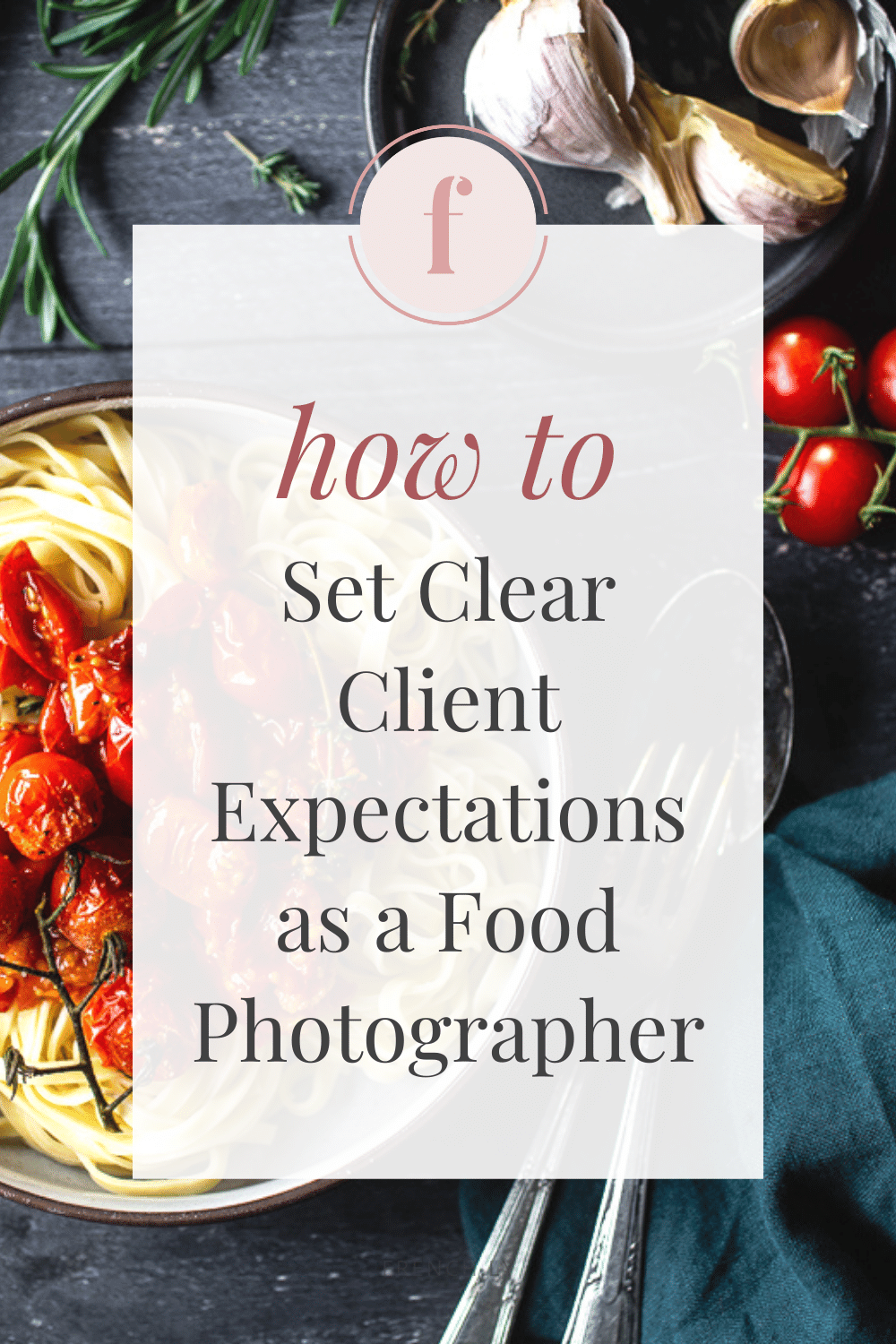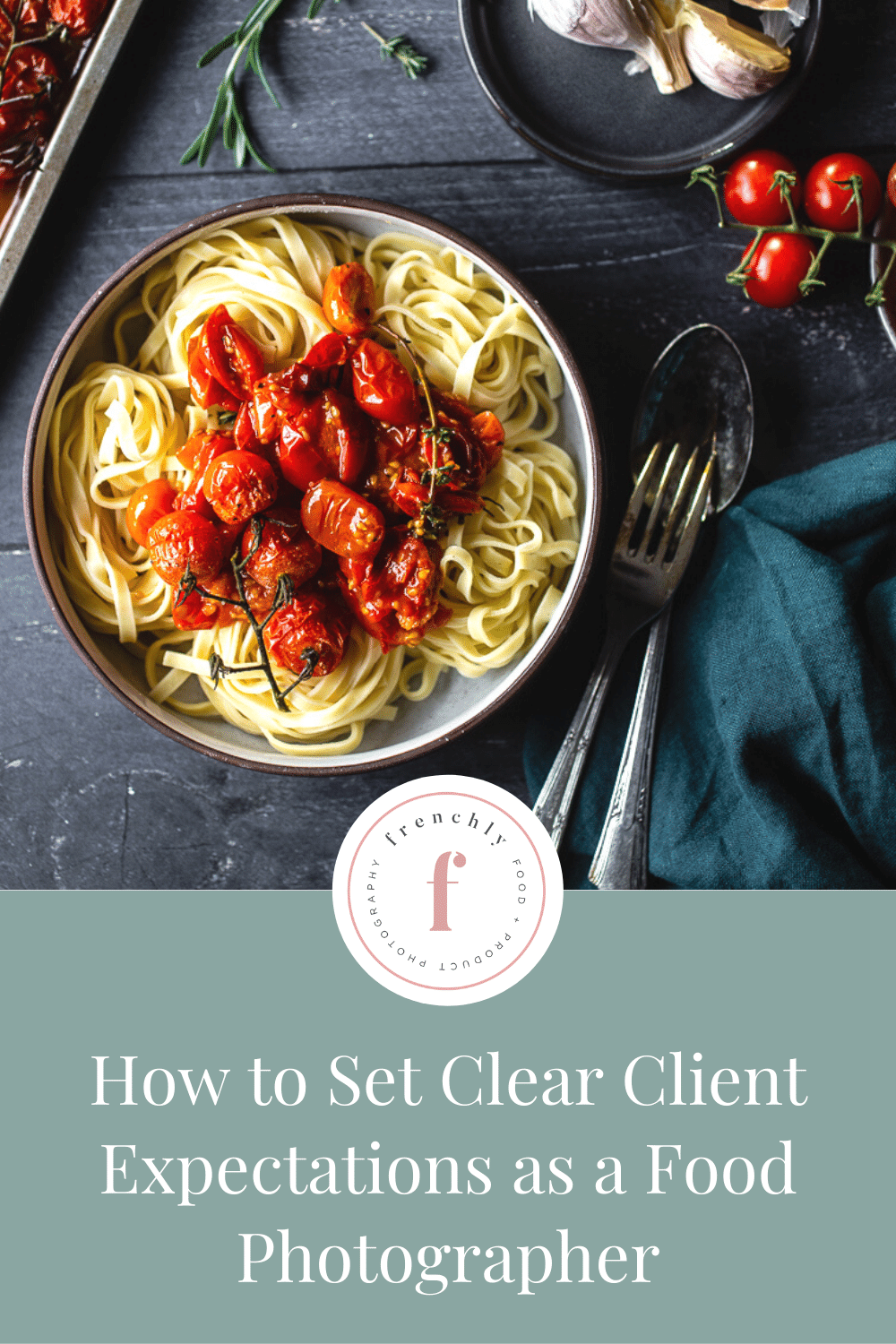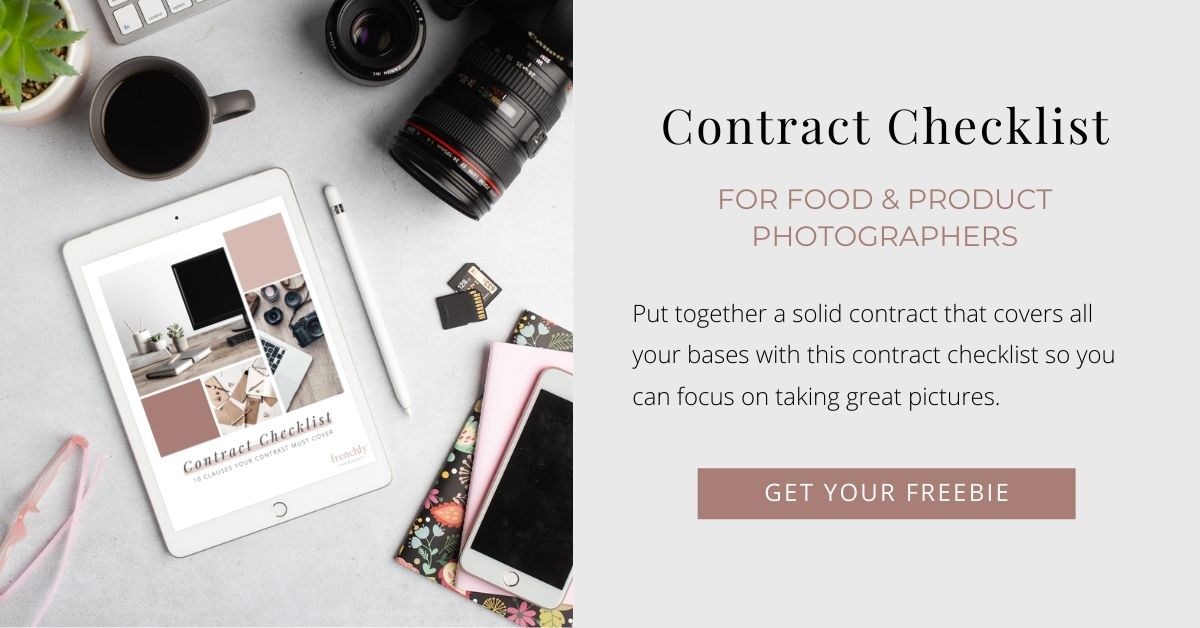In this guide, I show you how to choose who to pitch, how to find the right contact information, and how to craft a winning pitch.
PITCHING TO BRANDS AND IS THE BEST WAY TO GET YOUR IDEAL CLIENTS, AND YOU CAN DO IT WITHOUT FEELING ICKY
Gimme the Guide!
11 FOOD PHOTOGRAPHY DOCUMENTS EXPLAINED
Top Posts
11 PLACES TO SOURCE AFFORDABLE PHOTOGRAPHY PROPS AND BACKDROPS
30+ FOOD STYLING TIPS TO ELEVATE YOUR FOOD PHOTOGRAPHY
Free Resource
About Frenchly
I am a food + product photographer & educator specializing in eco-friendly and sustainable brands. When I am not working with clients, I empower creatives to start their journey by sharing my knowledge on the business of food + product photography.
How to Set Clear Client Expectations as a Food Photographer
March 23, 2022
It’s easy to take for granted what lives in your own head, isn’t it? While you are familiar with your creative style, it can be challenging to explain your process to your clients! In a food photography business, communication is key to making sure you meet client expectations.
Knowing what questions to ask (and what information to give) can make all the difference in the world to your clients. Read on for some important information on meeting expectations.

Why Is It So Important to Set Client Expectations?
Put yourself in your client’s shoes. It would be incredibly disappointing to receive photographs in black and white when you were expecting color, right? Or to receive photographs of half-eaten plates when you were expecting them to be untouched!
As challenging as it may be, it’s essential to set clear client expectations before beginning a photography project. Here are some reasons why.
It Protects Your Reputation and Prevents Client Frustration
The goal for any artist or entrepreneur is to build long-lasting relationships with their clients. If you don’t inform your clients about what they can expect from you, there is a chance they will be disappointed by the outcome.
Setting expectations in advance means getting everyone on the same page before work begins. In the end, both client and photographer should feel satisfied and unsurprised by the final results.
You Can Align Your Creative Visions and Fully Understand the Scope of the Work
As a photographer, of course you have a vision for the projects you’re assigned. But you have to take into consideration your client’s vision for the project, too. They’re paying you to make their ideas come to life!
Here are some great things to talk about when you are aligning your plan with client expectations:
- Timeline
- Target audience
- Lighting and style
- Props and backdrops
- Angles and orientation
- File size and types
Even if your client is confused by photography language, you have to find ways to explain different options. Bring sample photographs for similar assignments if it helps.
You’ll Build Strong Relationships with Your Clients
Fewer surprises means greater trust in the field of product photography. Clients like knowing exactly what they’re paying for, and they’ll seriously appreciate your effort to understand them.
Meeting client expectations often results in working with clients multiple times throughout your career! Satisfied clients will seek out your services any time they need good images because they will be confident in your process.
As a bonus, satisfied clients are likely to share when they’ve had a positive photography experience. So you are likely to get referrals from your clients each time you nail their expectations!
How to Set Clear Client Expectations Throughout the Client Process
You can’t leave something as important as client expectations up to chance! It helps to outline a plan so you don’t overlook crucial details or miss steps during the creative process.
Have a look at three times you should outline expectations for your clients.
Client Expectations In The Discovery Phase
The discovery phase marks the first and most important occasion for setting expectations with your clients. Successfully explaining your capabilities upfront can help prevent future upsets!
During the early stages of planning, be ready to listen carefully and explain (often several times over) exactly what you are able to do for your client. Be sure to speak clearly and concisely.
You should cover turnaround times, response times, and working hours during your first conversations with your clients. Consider printing those details and handing them over for future reference.
Look for the red flags as you discuss things! If a client doesn’t know what they want, changes their mind, or gives contradictory information, they may be angling to get what they want in spite of your outline. Hold your ground and be explicit!
Client Expectations During The Proposal Phase
Be crystal clear on what your proposal includes! You can use a line-item quote to really highlight what the client is getting.
Your line-item list should include:
- Number of images
- Production fees: studio and equipment rental, props and backdrops
- Cost for ingredients
- Your team’s fees (if you work with others)
- Editing and retouching included in the client’s package
After your lined items, you should explain what sort of usage rights you will be granting them. Don’t try to hide it until they’ve signed the contract! Be upfront and make sure they understand how usage rights work.
Related: When Is The Best Time To Use a Contract for Photography?
Client Expectations During The Contract Phase
Your contract should include everything that you agreed upon during the discovery and proposal phases. Now is your chance to spell out the clear scope of work, detailed usage rights, and all additional fees (associated with models, reshooting, or location)!
When all else fails, client expectations should be obvious in your contract. Once your client signs off on the terms you’ve agreed to, you are protected from confusion or general disagreements down the line. And your client is protected too! Contracts hold everyone accountable.
Even if you have horror stories about client miscommunications from your past, you can nail meeting client expectations moving forward. If you speak clearly and mark out everything in writing, you will be just fine. Your clients are sure to appreciate your effort and all-around transparency behind the lens.

Leave a Reply Cancel reply
| Created with Showit
| Design by Oregon Lane Studio
| Privacy Policy
© 2020 Frenchly Photography
Back to Top
THE WEBSITE
THE BLOG
Helping brands and businesses promote a happy, healthy and sustainable lifestyle through stunning food and product photography

client expectations are target able. Thanks for your food photography blog.